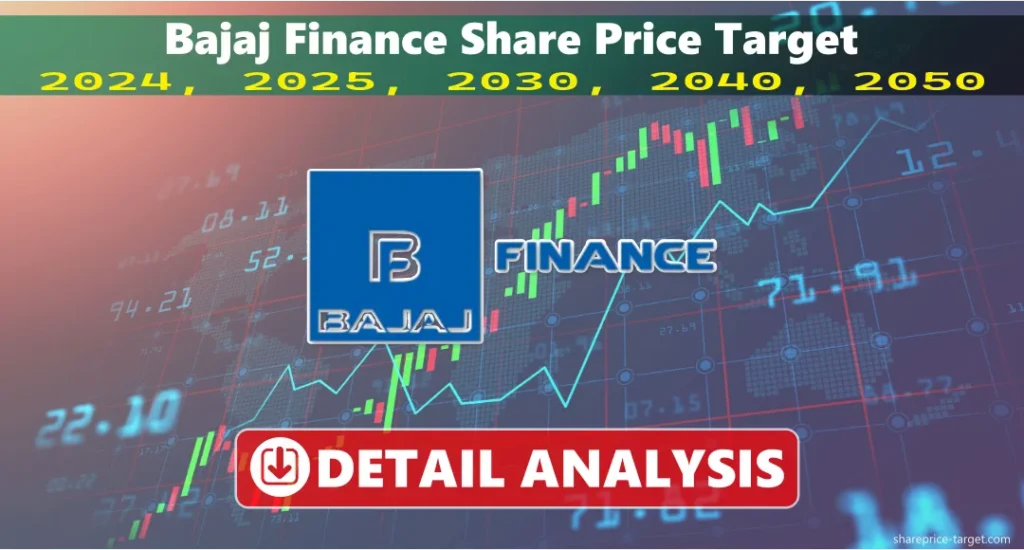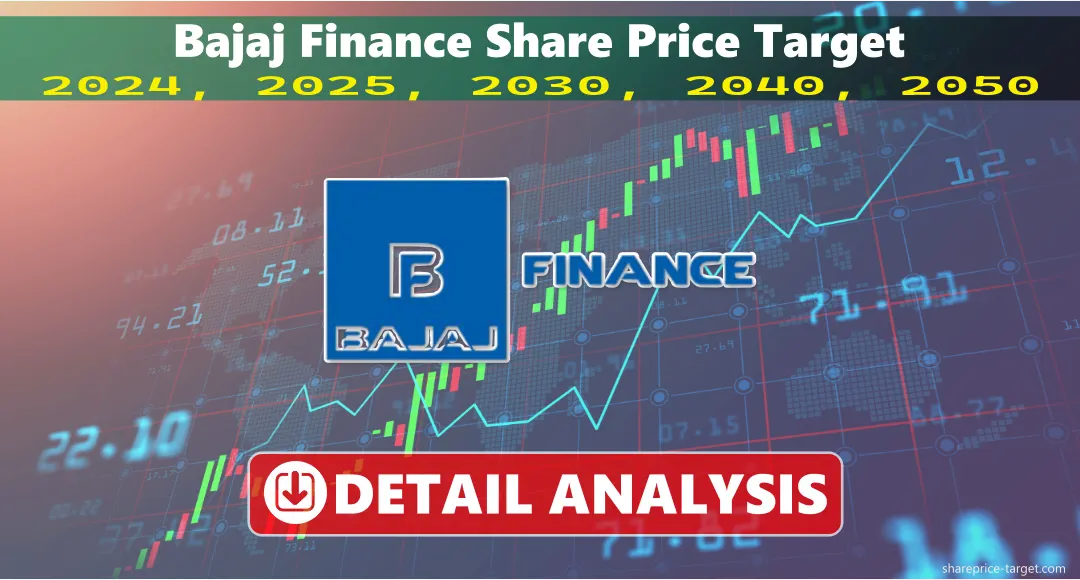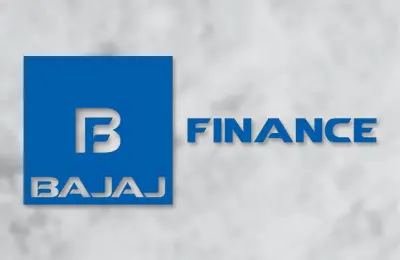Bajaj Finance Share Price Target 2026, 2027, 2030, 2040, 2050
Bajaj Finance Limited (NSE: BAJFINANCE), a significant Indian NBFC, offers a wide range of financial products and services. Bajaj financing has long attracted investors because of its leadership in consumer financing, SME lending, and commercial lending.
This article examines Bajaj Finance’s near- and long-term share price objectives and variables that may affect its stock performance.
- 1 What is Bajaj Finance Ltd NSE: BAJFINANCE?
- 2 Bajaj Finance Share Price Target Tomorrow
- 3 Bajaj Finance Share Price Target 2026
- 4 Share Price Target 2027
- 5 Share Price Target 2028
- 6 Share Price Target 2029
- 7 Bajaj Finance Share Price Target 2030
- 8 Share Price Target 2040
- 9 Share Price Target 2050
- 10 Should I buy Bajaj Finance stock?
- 11 Bajaj Finance Ltd Earning Results
- 12 Expert Forecasts on the Future of Bajaj Finance Ltd.
- 13 Is Bajaj Finance stock good to buy? (Bull case & Bear case)
- 14 Conclusion
- 15 FAQs
What is Bajaj Finance Ltd NSE: BAJFINANCE?
The National Stock Exchange lists Bajaj Finance Ltd. as BAJFINANCE, a subsidiary of Bajaj Finserv and part of the Bajaj Group. Founded in 1987 as Bajaj Auto Finance, it became Bajaj Finance in 2010. We provide personal loans, consumer durable loans, SME loans, business lending, rural lending, deposits, wealth management, and insurance distribution.
Fundamental Table
| Metric | Value |
| Market Cap | ₹454,804 Crore |
| P/E Ratio | 30.47 |
| Book Value | ₹1,239 |
| Dividend Yield | 0.49% |
| ROCE | 11.9% |
| ROE | 22.0% |
| Debt to Equity | 3.82 |
| Promoter Holding | 54.70% |
| EPS (TTM) | ₹233 |
In 2026, its share price target would be ₹1326, as per stock market analysts.
According to stock market analysts, its share price would be between ₹921 to ₹1326 in 2026.
| Year | Minimum Price (Rs) | Maximum Price (Rs) |
| 2026 | 921 | 1326 |
| Month | Minimum Price (Rs) | Maximum Price (Rs) |
| January | 975 | 1090 |
| February | 954 | 1168 |
| March | 921 | 1185 |
| April | 995 | 1199 |
| May | 1024 | 1221 |
| June | 1078 | 1237 |
| July | 1125 | 1249 |
| August | 1158 | 1262 |
| September | 1180 | 1278 |
| October | 1189 | 1292 |
| November | 1212 | 1311 |
| December | 1234 | 1326 |
In 2027, its share price target would be ₹2566, as per our analysis.
By our prediction, its share price would be between ₹1810 to ₹2566 in 2027.
| Year | Minimum Price (Rs) | Maximum Price (Rs) |
| 2027 | 1810 | 2566 |
In 2028, its share price target would be ₹3235, as per our analysis.
By our prediction, its share price would be between ₹2427 to ₹3235 in 2028.
| Year | Minimum Price (Rs) | Maximum Price (Rs) |
| 2028 | 2427 | 3235 |
In 2029, its share price target would be ₹3946, as per our analysis.
By our prediction, its share price would be between ₹3114 to ₹3946 in 2029.
| Year | Minimum Price (Rs) | Maximum Price (Rs) |
| 2029 | 3114 | 3946 |
Bajaj Finance should retain its market position and development trajectory until 2030. Technology investments, market development, and customer-centric innovations should provide long-term value for the organisation. In 2030, its share price target would be ₹4718, as per our analysis.
By our prediction, its share price would be between ₹3800 to ₹4718 in 2030.
| Year | Minimum Price (Rs) | Maximum Price (Rs) |
| 2030 | 3800 | 4718 |
In 2040, its share price target would be ₹10155, as per our analysis.
By our prediction, its share price would be between ₹9468 to ₹10155 in 2040.
| Year | Minimum Price (Rs) | Maximum Price (Rs) |
| 2040 | 9468 | 10155 |
Due to economic, legislative, and technological developments, 2050 share prices remain unclear. In 2050, its share price target would be ₹15312, as per our analysis.
By our prediction, its share price would be between ₹14487 to ₹15312 in 2050.
| Year | Minimum Price (Rs) | Maximum Price (Rs) |
| 2050 | 14487 | 15312 |
Should I buy Bajaj Finance stock?
When investing in Bajaj Finance, examine the pros and cons. To aid your judgment, consider these data:
| Year | Minimum Price (Rs) | Maximum Price (Rs) |
| 2026 | 921 | 1326 |
| 2027 | 1810 | 2566 |
| 2028 | 2427 | 3235 |
| 2029 | 3114 | 3946 |
| 2030 | 3800 | 4718 |
| 2040 | 9468 | 10155 |
| 2050 | 14487 | 15312 |
Over the years, Bajaj Finance has performed well financially. The company’s net profit climbed 26% annually from 2018 to 2023. The company’s Assets Under Management (AUM) grew 18.8% from ₹115,888 crore in FY2019 to ₹230,842 crore in FY2023. For years, the firm has had a strong ROE of above 20%.
As of March 31, 2023, Bajaj Finance has 66.05 million customers, up from 36.94 million in March 2019. This increase in client acquisition shows the company’s capacity to attract and keep consumers, which is vital to its long-term success.
Investors may also consider NBFC regulation changes, economic uncertainty, and fintech startup and conventional bank rivalry.
Bajaj Finance Ltd Earning Results
Bajaj Finance announced a consolidated net profit of ₹3,551 crore in Q2 FY2024, an increase of 31% compared to the previous year. Thanks to robust expansion in its loan and insurance divisions, the firm saw a 34% increase in its overall revenue, reaching ₹13,378 crore. As of September 30, 2023, the Assets Under Management (AUM) had increased by 33% compared to the previous year, reaching ₹270,097 crore.
| Quarter | Revenue (₹ Cr) | Net Profit (₹ Cr) | EPS (₹) |
| Q2 FY2024 | 13,378 | 3,551 | 58.60 |
| Q1 FY2024 | 12,498 | 3,437 | 56.72 |
| Q4 FY2023 | 11,364 | 3,158 | 52.16 |
| Q3 FY2023 | 10,787 | 2,973 | 49.11 |
Expert Forecasts on the Future of Bajaj Finance Ltd.
Market and financial analysts are optimistic about Bajaj Finance’s future. Many expect the company’s strong market position, diverse business strategy, and digital innovation to fuel development. Bajaj Finance may profit from financial inclusion in India and rising consumer and SME lending, according to some analysts.
However, regulatory changes, economic uncertainty, and financial services sector competitiveness are hazards, experts warn. Experts agree that Bajaj Finance is poised for long-term development, but investors should assess their risk tolerance and ambitions.
Is Bajaj Finance stock good to buy? (Bull case & Bear case)

Bull Case:
- High brand awareness and consumer loyalty
- Consumer financing, SME lending, and commercial lending revenue diversification
- Strong digital infrastructure and tech-driven solutions
- Financial services market share growth potential in underpenetrated sectors
- Continuous profitability and shareholder value development
Bear Case:
- High-value multiples relative to peers
- Regulatory risks in the NBFC sector
- Potential impact of economic slowdowns on loan demand and asset quality
- Rising fintech and financial institution rivalry
- Funding from short-term borrowings may cause liquidity problems.
Conclusion
Bajaj Finance is a financial services leader in India, known for its development and innovation. The company’s diverse business strategy, digital transformation emphasis, and high brand awareness position it for success. This article presents share price targets based on current trends and research, but investors should remember that the stock market is unpredictable and risky.
Research, financial objectives, and risk tolerance should be considered before investing. Consult a financial professional. Remember that previous performance does not guarantee future results, and stock investment is risky.








